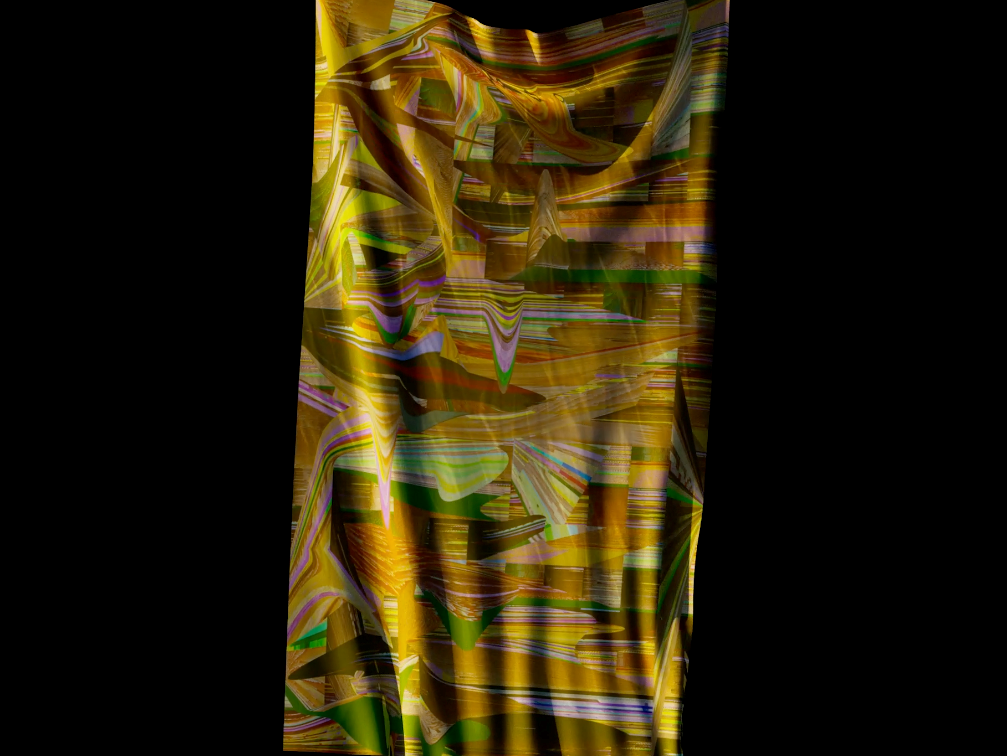Comestible-Weave & @Comestiblemealplan
Pat Badani
Comestible, a multi-part project that I develop since 2010, considers the individual and the mass produced in American diets to enter the bigger debate about money, hope, experience, and ideas related to self-improvement and a better life. Vegetables, fruits, and industrial foodstuffs are recast into an ecosystem that explores “dietic utopias/dystopias” and its complex systems marked by anxieties about production, consumption and value. The projects allow me to examine paradigm shifts associated with different visions of a “better life”, dissect problematic global perspectives dominated by economics and endless growth, and speculate on possible futures.
I am interested in what happens to media as it is subjected to various electronic processes. With this in mind, selected digital images of industrialized foodstuffs from my “Comestible” archive were subjected to digital processes producing glitches. The back-end code driving the digital images of foodstuffs were ‘hacked’ using texts from literary sources ranging from “Paradise Lost” by John Milton (1667) to “The Edible Woman” by Margaret Atwood (1969). In a re-codification process, I erased existing code and introduced literary texts that highlight the transformative role of women in sensing nature through food cultivation, distribution, and consumption -- and the pursuit of the ‘good-life’ as defined by different ideologies and the rules that help them function. For example, in “Paradise Lost”–¬where Milton can be seen as attempting to make sense of a fallen world– the role of food reflects Eve's power in the epic story. In “The Edible Woman”, Atwood can be seen as exploring gender equity through food and diets that are dictated by, or that resist, a consumer-oriented society.
The glitched images spawned two new works: “Comestiblemealplan-Weave” an animation and “@Comestiblemealplan” a participatory Instagram archive.
In “Comestiblemealplan-Weave”, the glitched images were compiled into one checkered file, and using 3D animation software, the file took the form of an animated drapery that seemingly blows in the wind. The animation embodies flexibility and adaptability, while remaining anchored and returning to center.
About the Artist
Pat Badani is a media artist, writer and researcher who explores notions of utopia and dystopia through emergent art practices. Her artworks have been showcased in international festivals and symposia: ISEA; Transmediale; New Forms Festival; FILE; Festival Internacional de la Imagen; Currents; Art Souterrain; Balance-Unbalance; and in venues such as Espacio Fundación Telefónica, Argentina; New York Hall of Science, USA; Guggenheim Gallery Chapman University, USA; Tarble Arts Center-Museum, USA; Urban Institute for Contemporary Arts, USA; UIUC iSpace Gallery, USA; Musée de Bas Saint Laurent, Canada; NSCAD Anna Lenowens Gallery, Canada; Canadian Cultural Center, France; Maison de L’Amerique Latine, France; FRAC Corsica, France; Museo de Arte Moderno, Mexico; Museo Universitario del Chopo, Mexico; Museo de Monterrey, Mexico; MECAD\Media Centre of Art & Design, Spain; to name a few. She has received over twenty awards and commissions including a media arts research-creation grant from the Canada Council for the Arts for her project “Where are you from?_Stories” exploring the utopian imagination in human migration; support from the “Robert Heinecken Trust Fund” for her project “Al Grano” investigating the dystopian impact of GMO corn on maize in Mexico; a DCASE award, and a National Endowment for the Arts MacDowell Fellowship for her project “Comestible” in which she surveys dietic utopias/dystopias in contemporary food-diets. In 2018 she was nominated for an AWAW merit award recognizing women of creative vision in the USA. She has participated in conferences with her essays and talks in over 15 countries. Essays and reviews examining Badani’s works have been published in three languages in international solo and group exhibition catalogues, in thematic anthologies, and in journals.
